Immunity called immunity (resistance) of the body to an infectious disease in contact with its pathogen and the presence of conditions conducive to infection.
For example, conifers are never affected by powdery mildew, while deciduous species are never affected by Schutte-type diseases. Spruce is completely immune to shoot rust, and pine - to the rust of cones.
Such absolute immunity due to the biological inconsistency of these plants with the properties and requirements of the pathogens of these diseases. Most often, it is explained by the inability of the pathogen to penetrate the plant and develop in it even under the most favorable external conditions.
Along with absolute immunity to some diseases, plants can exhibit relative resistance (or, accordingly, relative susceptibility) to other diseases. It depends on the individual properties of the plant, its anatomical-morphological or physiological-biochemical characteristics, which reduce the possibility of infection or limit the spread of the pathogen in the tissues of the host plant.
The degree of resistance of plants to diseases can vary from very high (close to complete immunity) to very low.
Plants are distinguished nonspecific And specific immunity.
non-specific(or specific) immunity is the resistance of a certain plant species to those pathogens that are generally unable to infect this species.
Nonspecific immunity ensures that plants are inaccessible to the bulk of the saprotrophic and pathogenic microflora inhabiting the habitat of these plants.
specific(or varietal) immunity is the resistance of individual varieties or forms of a plant species to pathogens that can infect this species.
There are also immunity congenital (natural) And acquired (artificial).
innate immunity called hereditary immunity to a disease, formed as a result of long-term co-evolution (phylogenesis) of the host plant and pathogen or directed selection.
acquired immunity called resistance to a disease acquired by a plant in the process of its individual development(ontogenesis) under the influence of certain external factors or as a result of the transfer of this disease. acquired immunity not inherited.
plant resistance(usually of any variety) only to certain physiological races of the pathogen are called vertical , and one or another degree of resistance to all races of a given pathogen - horizontal .
The resistance of a plant species or variety at the same time to several diseases are called group , or integrated , stability .
innate immunity plants happen passive And active.
Passive Immunity, or axenia, is resistance to a disease, which is provided by properties that appear in plants regardless of the threat of infection.
Thus, the properties that determine passive immunity, are not defensive reactions of the plant to the attack of the pathogen.
active immunity - this is resistance to a disease, which is provided by the properties of plants that manifest themselves in them only in the event of a pathogen attack, that is, in the form defensive reactions of the host plant to the introduction of the pathogen.
Passive Immunity may be associated with the features of the form and anatomical structure of plants or with their functional, physiological and biochemical characteristics.
Plant properties that determine passive immunity, are usually manifestations horizontal stability. They are very numerous, diverse and can be combined into two main groups: anatomical and morphological And physiological and biochemical.
Anatomical and morphological factors of passive immunity:
Protective adaptations of plants, expressed in the features of their shape or structure, are widespread in nature and play an important role in the natural immunity of plants.
Anatomical and morphological factors of passive immunity can serve as a sprawling crown shape, a small number and special structure of stomata, a closed type of flower, the presence of dense pubescence or wax coating on the surface of the affected organs, a thick cuticle or cork layer, a powerful development of sclerenchymal tissue, and other structural features.
When loose , sprawling form of a bush or crown direct sunlight freely penetrates into it, it is better ventilated, moisture almost does not linger in it, as a result of which an unfavorable microclimate is created for preserving the infectious onset of pathogens, the germination of spores of phytopathogenic fungi. Therefore, ceteris paribus, trees and shrubs with such a crown are less affected by diseases than trees with a dense, compact crown.
The number and size of stomata and lenticels, the shape of the stomatal gap may be factors in plant resistance against pathogens entering the plant through these natural passages. The smaller the number of stomata and lenticels per unit surface of the affected organs, the smaller the stomatal gaps, the less the pathogen has a chance of infection, the higher the resistance of the plant.
The structure of the flower and the nature of flowering can determine the resistance or susceptibility of plants to diseases, the pathogens of which are introduced through the stigmas, nectaries and other parts of the flowers. Species and varieties of plants characterized by a closed type of flowering are usually less affected by such diseases than species or varieties with open flowering.
Unfavorable conditions for the germination of fungal spores are created when the presence on needles, leaves, fruits of a wax coating or abundant pubescence, as this makes them non-wettable. For example, gray ("blue") forms of some conifers, the needles of which are covered with a wax coating, as a rule, more resistant to shutte and rust compared to conventional forms.
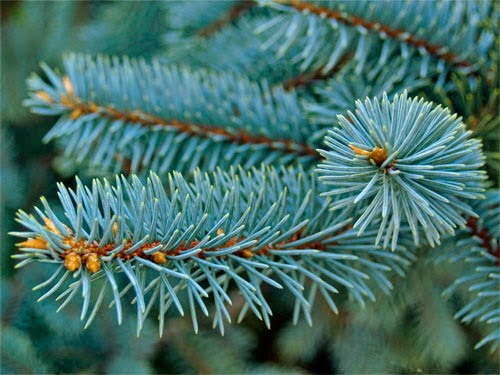
The resistance of some plant species and cultivars to infection by fungi that invade directly through the cuticle is often greater than that of susceptible species, thickness of the cuticular layer. Thus, in the barberry species Berberis dictyophylla, which is strongly affected by rust, the total thickness of the cuticle and the outer wall of the epidermis is 0.82 microns, and in the unsusceptible Berberis thunbergii, it is 1.57 microns, that is, it is almost twice as large.
Berberis thunbergii:
Related to this factor is age resistance of leaves and shoots oak to powdery mildew. Young growing leaves, which have a thin, delicate cuticle, are severely affected by powdery mildew. As the thickness and strength of the cuticular layer increases, the resistance of the leaves also increases. Leaves that have finished growing are practically immune to the disease. plays the same protective role lignification of shoots. The cuticle can serve for pathogens only a mechanical, but also a chemical barrier, since the wax and cutin contained in it have fungicidal properties.
An important factor in sustainability can be anatomical features and physical and mechanical properties of the internal tissues of plants: denser parenchymal tissue, powerful development of sclerenchyma and its location in the peripheral part of the stem or around the vascular bundles prevent the spread and normal development of the pathogen inside the plant. Thus, pine specimens resistant (or hardy) to the root fungus in the foci of the disease are usually characterized by a greater thickness of annual layers and walls of tracheids, a higher percentage of late wood, and other features. Studies have shown that the thickening of the cell walls in the wood of resistant pines is due to the increased content of hemicelluloses And lignin .
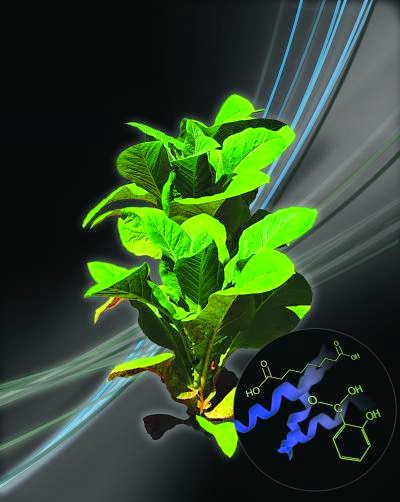
Physiological and biochemical factors of passive immunity:
This group of factors includes specific features of plant metabolism, high content or a certain qualitative composition of carbohydrates, proteins and their decay products, the presence in plant cells of substances that perform a protective role, physical and chemical features of tissues, some functional features of plants.
The resistance of a plant to a disease can be associated with the absence in its tissues of the nutrients or physiologically active substances necessary for the pathogen, the mismatch between the metabolism of the host plant and the metabolism of the pathogen, the inhibition of the pathogen by toxic products of the plant's metabolism, and other factors unfavorable for the pathogen.
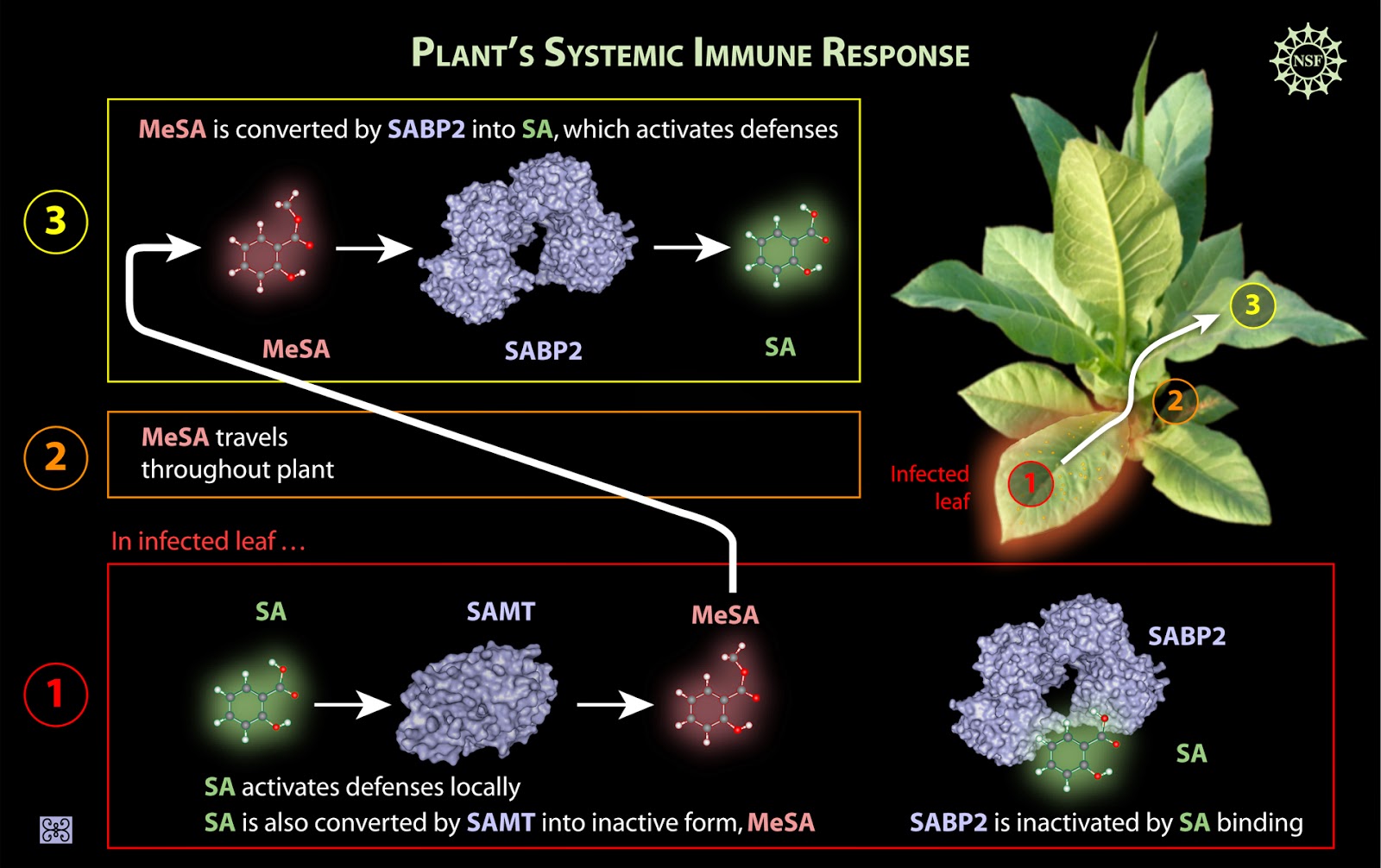
The protective role of other substances is more complex and is associated with their active participation in the biochemical reactions of the cell, leading to the formation of toxic compounds. In cases where such reactions occur under the influence of a pathogen, they should already be considered as protective reactions of active immunity.
One of the factors of resistance of pine to root fungus is the content of phenolic substances in wood (in particular, resorcinol ), which have a strong inhibitory and toxic effect on the fungus. The connection between the resistance of spruce bast to the spread of the root fungus and the content of phenolic compounds in it has also been proven.
certain role in passive immunity plants to phytopathogenic organisms play such physico-chemical parameters of plant cells as cytoplasmic permeability, osmotic pressure And cell sap acidity.
Resistance to the introduction of pathogens may be due to some functional features of plants, for example, the daily rhythm of stomata movements, the nature of seed germination, the ability for intensive callus formation, rapid wound healing, and others.
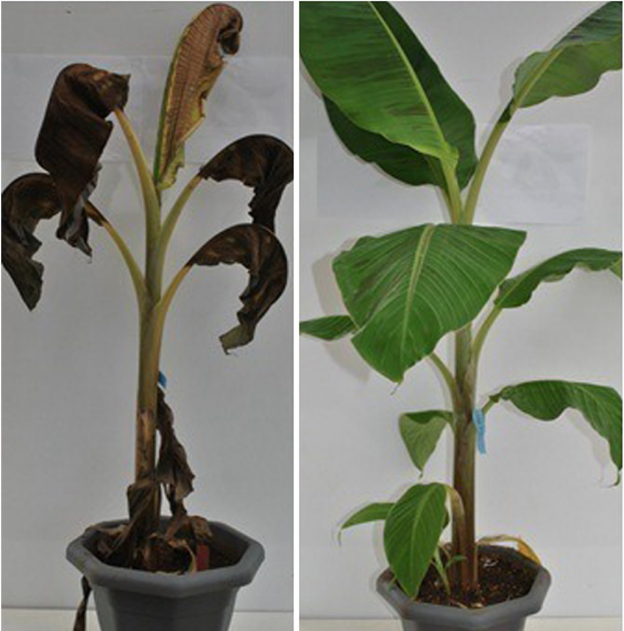
Active innate immunity:
Manifestations active immunity are in the nature of specific plant defense reactions that occur in response to infection. They can be aimed at suppressing the causative agent of the disease itself, destroying and neutralizing its secretions, or at restoring the physiological functions and metabolism of the affected plant disturbed by the disease.
Distinguish anti-infectious And antitoxic defense reactions of plants(however, it is not always possible to draw a clear line between them).
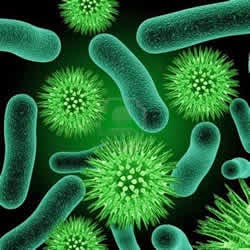
Externally hypersensitivity reaction is expressed in the appearance on the leaves of small chlorotic, and then necrotic spots (the so-called protective necrosis). In highly resistant plants, small, point necroses are formed, which practically do not affect the work of the assimilation apparatus. Hypersensitivity reaction - the most characteristic manifestation vertical stability.
Antitoxic defense reactions of plants are aimed mainly at neutralizing enzymes, toxins and other harmful waste products of pathogens.
Reactions of this type include rearrangement and activation of host plant enzyme systems, formation of mechanical barriers, and others.
The most important factor in active immunity is perestroika plant enzyme systems , first of all oxidative system. When resistant plants are infected, the activity of the oxidative system in them is sharply activated and acquires the character of a protective reaction aimed at reducing the harm caused by the pathogen.
Resistant plant oxidative enzymes inactivate hydrolytic enzymes pathogen or inhibit the synthesis of these enzymes. In addition, they neutralize pathogen toxins, destroying them or oxidizing them to compounds that are harmless to the plant.
It should be noted that oxidative enzymes that are insensitive to pathogen toxins and even become activated under their action predominate in resistant (unlike susceptible) plants.
The active resistance of the plant can manifest itself in thickening of cell membranes surrounding the area of infection, the formation of a cork layer or a layer of secondary periderm around the infected area. Such mechanical barriers delay the spread of the pathogen and its toxins, lead to its localization or displacement from the plant along with the area of the affected tissue (as is observed with perforated leaf spot).
One more example antitoxic defense reaction of this type - the formation in the roots of trees infected with honey agaric, secondary periderm, which prevents the spread of fungal toxins to the overlying parts of the tree.
Educational processes protective fabric barriers are also closely related to the activation of host plant enzyme systems.
Summarizing what has been said about the innate immunity of plants, it must be emphasized that the resistance of plants to infectious diseases in most cases is determined not by individual features or properties of the organism, but by a complex of complex protective mechanisms that are closely interconnected and act at certain stages of the pathological process.
